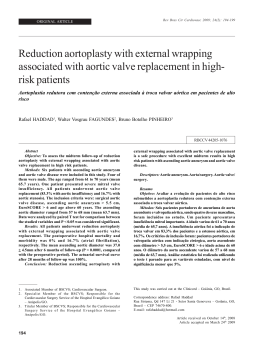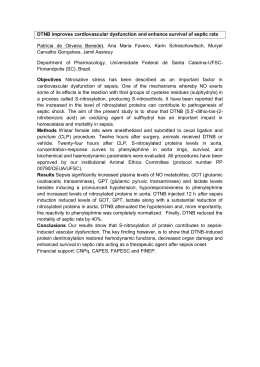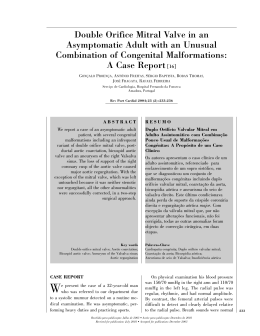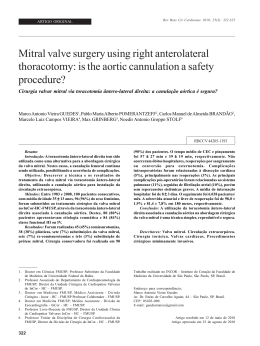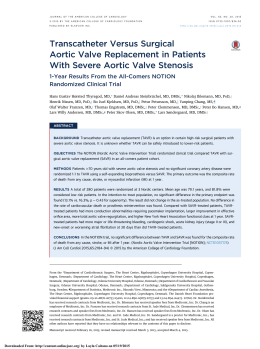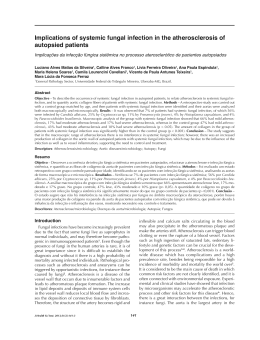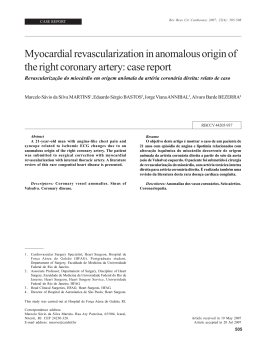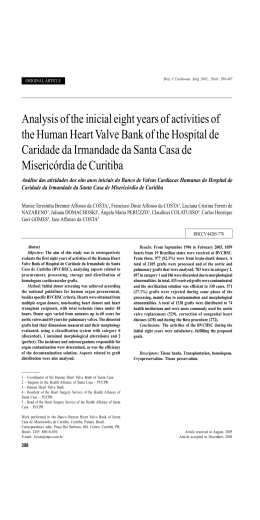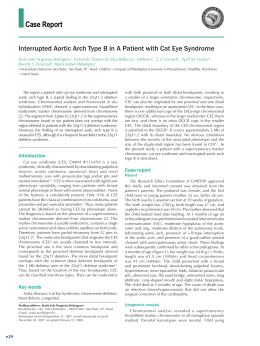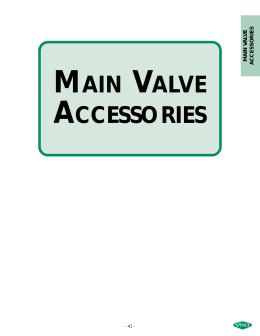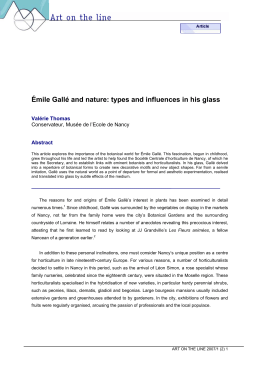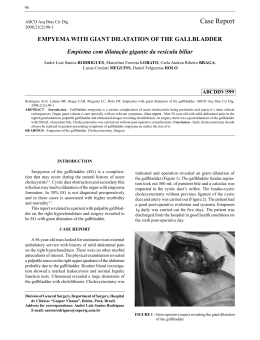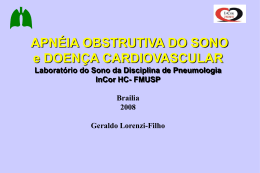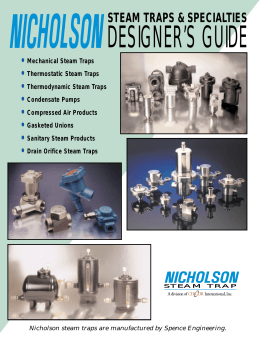UNUSUAL PRESENTATION OF MULTIPLE ANEURYSMS OF THE ASCENDING AORTA. A CASE REPORT. Sergio Francisco dos Santos Junior, Marcelo Luiz Peixoto Sobral, Anderson da Silva Terrazas, Gilmar Geraldo dos Santos, Noedir Antonio Groppo Stolf Introduction Aneurysms of the ascending aorta can handle from the aortic valve to the aorta [1]. Are related to congenital syndromes as Marfan and Ehlers-Danlos [2], acquired disease as aortic valve disease and vascular disorders like atherosclerosis [3]. These aneurysms lumps presents cystic degeneration of the aorta, histological change that is characterized by the triad of smooth muscle cell loss, fragmentation of elastic fibers and accumulation of basophilic substances in areas where there is loss of cells of middle layer, all non-inflammatory changes of origin [3]. This degeneration does not involve evenly the wall of the ascending aorta [2, 3], the convexity of the vase is the hardest hit, and since it is in this region the degeneration is more severe, with greater loss of muscle cells, apoptosis, and greater fragmentation of elastic fibers. This change has an important role in the development of aortic aneurysms because it participates in the remodeling process resulting in the synthesis of extracellular proteins such as collagen, elastin and proteoglycans [2]. Description Reported a case of a man of 24 years who presented precordial pain and dyspnea that evolved with worsening over the past six months prior to the consultation, without personal or family history of hypertension, diabetes, dyslipidemia, smoking or infectious diseases such as syphilis. The physical examination showed no stigmas of congenital syndromes, and revealed only severe systolic murmur in aortic focus. Preoperative examinations were conducted as routine. Laboratory tests were unchanged, as well as the chest radiograph. The electrocardiogram showed sinus rhythm, incomplete right branch block and left ventricular hypertrophy. The Echocardiogram showed aortic stenosis due to leaflets thickened, with an average gradient of 65mmHg and ejection fraction of the left ventricle of 63%, diameter 30 mm of the ascending aorta, systolic and diastolic diameter of left ventricle 32 and 48 mm, respectively. We indicated surgery for aortic valve replacement. The procedure was performed by median sternotomy. After pericardiotomy noticed an unusual aspect of the ascending aorta, with an irregular surface and fine textured soft lumps (figure 1). It was held above aortic perform cannulation and medial ward to the trunk brachycephalic and perform cannulation of the right atrium through the atrial appendage. A vacuum of left ventricle was placed through the upper right pulmonary vein. After total heparinization extracorporeal circulation was initiated, the aorta was clamped and transverse aortotomy performed. The internal aspect of the vase was focal thickened with multiple holes of different sizes that corresponded to the lumps seen externally, not having been evidenced thrombi (figure 2). Blood hypothermic cardioplegy solution was infused by anterograde way every twenty minutes through coronary ostium. The three aortic leaflets presented thickened and were removed, as well as the convexity and anterior-medial anterior-lateral concavity, leaving a posterior third of the vase, macroscopically normal. The pieces were sent to histological study and the procedure was completed. The mechanical prosthesis implanted was number 21 and a Dacron tube number 24 to replace segment of ascending aorta above the level of the coronary ostium. The withdrawal of air was conducted by a catheter placed in the tube, the aortic clamp was removed with the return of the effective heartbeat, the patient was disconnected from extracorporeal circulation, and surgery ended as usual. The patient was sent to the intensive care unit where he remained for a day and was discharged from hospital on the tenth day of hospitalization. Evolving to the present moment without complications. Discussion Histopathological findings were: ascending aorta with intima fibrosis with dystrophic calcification compatible with atherosclerosis, cystic degeneration of areas with average sacular lumps diffusely distributed and absence of inflammatory process (figure 3 - A, B, C). The aortic leaflets were fibrous with dystrophic calcification and myxomatous degeneration. An angiotomography of the aorta was held post-operative and showed no other injuries in the aorta, the Dracon graft in ascending aorta and mechanics valve prosthesis in aortic position were properly allocated (figure 4). Some laboratory tests to identify infectious diseases such as syphilis and autoimmune diseases such as vasculitis were made but has not been identified any causative agent of injury in the ascending aorta. The atherosclerosis is the second most common cause in aneurisms [4], before considered as primary cause it is related to a secondary transformation to a previously ill aortic wall by cystic degeneration [5]. In this case the histopathological finding showed average cystic degeneration and atherosclerosis in a young patient and without risk factors for atherosclerotic disease. Infectious diseases causes such as syphilis, which before the advent of antibiotics was the first cause of aneurysms of the ascending aorta, and bacterial are currently rare. They take to a fibrotic thickening and dilatation, and syphilitic aortits may be irregular. Post-operative examinations were performed but did not identify causes such as syphilis and autoimmune Vasculitis. Post valve stenosis dilatation of the ascending aorta occurs so often in chronic patients but also feature a uniform standard. These changes helped determine the thinning of the aortic wall, although it does not explain the irregular lumps with cavities instead of a uniform dilatation. The decision to perform the replacement of the ascending aorta was taken despite the diameter of the aorta does not contemplate the classic definitions of aneurysms. Even being the largest diameter 30 mm, not more than 1.5 times the size of his normal aorta, leaving the vase untouched could bring future repercussions as larger lumps, thromboembolic complications, aortic dissection or rupture. Rare macroscopic surface of aorta find in this case configures reporting not found in the literature available. The etiology was not defined, either if they were congenital or acquired. Discussion is needed in the scientific community and a new study of the patient to ensure that this is the case may be necessary. References [1] Cohn LH, Rizzo RJ, Adams DH, Aranki SF, Couper GS, Beckel N, Collins, JJJr. Reduced Mortality and Morbidity for Ascending Aortic Aneurysm Resection Regardless of Cause. Ann Thorac Surg 1996; 62: 463-468. [2] Santè Agozzino L, P, Ferraraccio F, Accardo M, Feo M, Santo LS, Nappi g. Agozzino M, Esposito s. Ascending aorta in aortic valve disease dilatation: morphological analysis of medial changes. Heart Vessels 2006; 21: 213-220. [3] Bonderman D, Gharehbaghi-Schnell, Wollenek G, Maurer G, H, Lang IM Baumgartner. Mechanisms Underlying Aortic Dilatation in Congenital Aortic Valve Malformation. Circulation 1999; 99: 2138-2143. [4] Bickerstaff LK, Pairolero PC, Jail LH, et al: Thoracic aortic aneurysms: A population-based study. Surgery 1982; 92: 1103. [5] Svensson LG, Crawford ES: Degenerative aortic aneurysms, in Svensson LG, Crawford ES (eds): Cardiovascular and Vascular Disease of the Aorta. WB Saunders, Philadelphia, 1997. Figure legends Figure 1. External macroscopic aspect of ascending aorta showing multiple lumps on its surface. Figure 2. The internal macroscopic aspect of ascending aorta showing sacular characteristic of expansion beyond the absence of thrombosis inside. Figure 3. A- Segment of aorta in small secular lumps showing intense wall thinning with loss of smooth muscle fibers (Masson, Trichromic = 50;) B- Massive Deposition of proteoglycans associated to the areas of fragmentation of elastic fibers (Alcian Blue = 200 x); C- Area of intense fragmentation of elastic fibers (Verhoeff = 200 x). Figure 4. Reconstruction in three dimensions of angiotomography of aorta and its branches. No evidence of other injuries, in addition to confirm proper position of Dacron graft and aortic valve prosthesis.
Download
